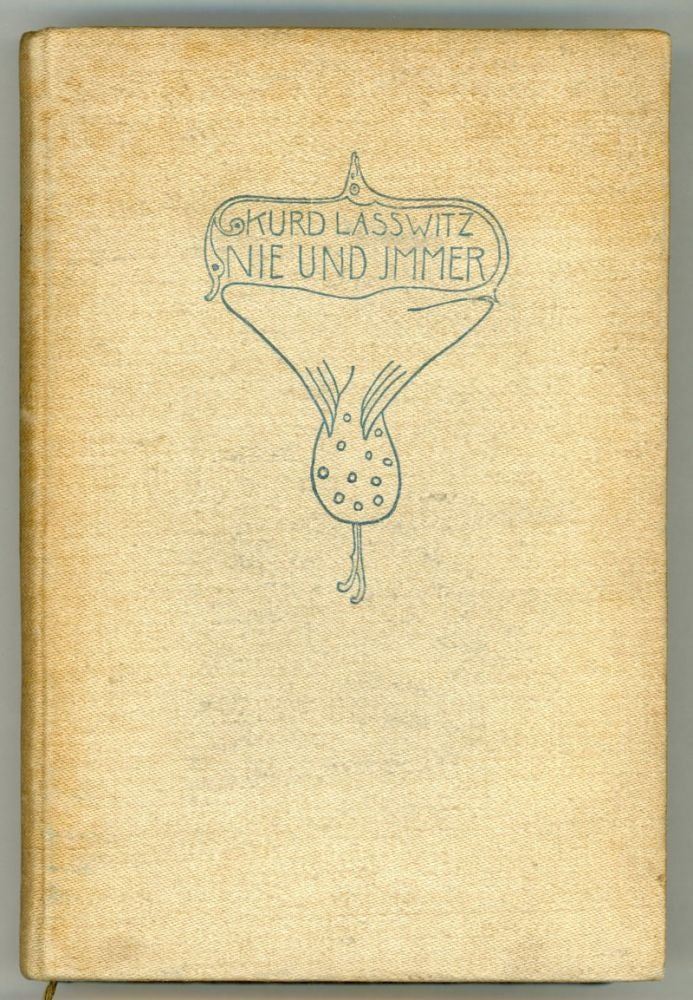NIE UND IMMER. NEUE MARCHEN ... Mit Buchschmuck von Heinr. Vogeler. Leipzig: Verlegt bei Eugen Diederichs, 1902. Octavo, pp. [1-8] [1] 2-336 [337: contents] [338: printer's imprint], Art Nouveau illustrations, including frontispiece, title page, small vignettes and endpapers, by Heinrich Vogeler, original pictorial tan cloth (Art Nouveau design by Heinrich Vogeler), front and spine panel stamped in dark blue, t.e.g., decorated endpapers, white ribbon marker. First edition, first printing. Collects ten tales (under the heading of "Traumkristalle" [Dream Crystals]) and a short novel, HOMCHEN. In "Der gefangene Blitz" [The Captive Lightning-Bolt] and "Morgentraum" [Morning Revery] "scientific ideas and technological objects appear in personified form, just as animals, plants or spirits are given human traits in the Aesopian fable or the traditional Marchen." - Fischer, The Empire Strikes Out, p. 111. Fischer argues that it was such experimentation with the Marchen form, as with the utopia and imaginary voyage forms, that gave Lasswitz "a better understanding of the fundamental nature of imaginary worlds in SF." - ibid, pp. 111-12. HOMCHEN, set in the Upper Cretaceous period during the last days of the dinosaurs but before the advent of mammals, is "a Darwinian novel [about] a marsupial, an ancestor of man, who is braver than the other animals and also more intelligent, even discovering the uses of fire ..." - Rottensteiner, "Kurd Lasswitz: A German Pioneer of Science Fiction," Riverside Quarterly, August 1969, p. 14. But he fails to interest the other marsupials in his discoveries. Like the humanoid cloud in Lasswitz's later novel ASPIRA, the advanced marsupial learns that, as the old show-biz adage has it, "pioneering doesn't pay." Genius alienates such visionaries from their fellow beings (perhaps reflecting on the author's own situation as a literary pioneer). In addition to other levels of personal, social and political meaning, the novel can be seen as a companion to the work of Verne and Wells in popularizing scientific material. According to Rottensteiner (Riverside, p. 15), the author's "most rewarding" stories are found here and in SEIFENBLASEN. Bloch (2002) 1866. Not in Nagl. Kretzmann, The Pre-War German Utopian Novel (1890-1914), Ph.D. diss., Brown University, May, 1936, p. 213. Bookplate of Johann and Dora Kruse affixed to front paste-down. A bit of tanning to cloth, else a nice, very good copy with fine interior. A rare book. (#152404).
Price: $750.00
No statement of printing.


